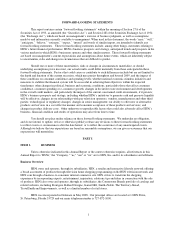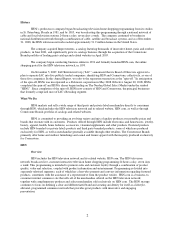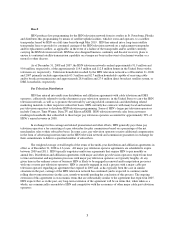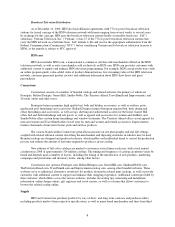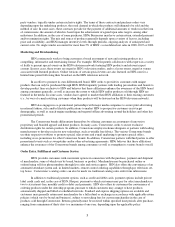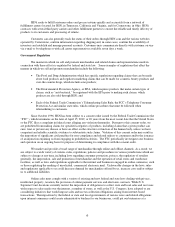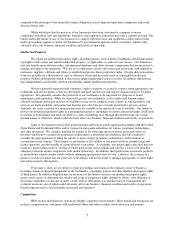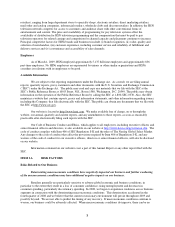Home Shopping Network 2008 Annual Report Download - page 14
Download and view the complete annual report
Please find page 14 of the 2008 Home Shopping Network annual report below. You can navigate through the pages in the report by either clicking on the pages listed below, or by using the keyword search tool below to find specific information within the annual report. 11
Our long-term success depends, in large part, on our continued ability to attract new and retain existing
customers. We may not be able to do that in a cost-effective manner.
In an effort to attract and retain customers, we engage in various marketing and merchandising initiatives,
which involve the expenditure of considerable money and resources, particularly in the case of the production and
distribution of HSN television programming and Cornerstone catalogs and, to a lesser but increasing extent, online
advertising. We have spent, and expect to continue to spend, increasing amounts of money on, and devote greater
resources to, certain of these initiatives, particularly in connection with the growth and maintenance of our brands
generally, as well as in the continuing efforts of our businesses to increasingly engage customers through online
channels. These initiatives, however, may not resonate with existing customers or consumers generally or may not
be cost-effective. In addition, we believe that costs associated with the production and distribution of HSN television
programming, paper and printing costs for Cornerstone catalogs and costs associated with online marketing,
including search engine marketing (primarily the purchase of relevant keywords) are likely to increase in the
foreseeable future and, if significant, could have an adverse effect on our business, financial condition and results of
operations to the extent that they do not result in corresponding increases in sales.
Our businesses may not be able to accurately predict and/or respond in a timely manner to evolving
customer preferences and trends and industry standards, which could result in excess inventory, related
markdowns and lost sales.
Our success depends, in significant part, on the ability of our businesses to accurately predict, and respond
in a timely manner to, changes in customer preferences and fashion, lifestyle and other trends and industry
standards. While product mix and price points are continuously monitored and adjusted in an attempt to satisfy
consumer demand and respond to changing economic and business conditions, our businesses may not be successful
in these efforts, and any sustained failure could result in excess inventory and related markdowns.
In addition, the e-commerce industry is characterized by evolving industry standards, frequent new service
and product introductions and enhancements, as well as changing customer demands. If our businesses are not able
to adapt quickly enough and/or in a cost-effective manner to these changes it could result in lost sales.
Failure to effectively manage our Flexpay program could result in unplanned losses.
HSN offers Flexpay, pursuant to which customers may pay for certain merchandise in two to six interest-
free, monthly credit or debit card payments. We maintain allowances for estimated losses resulting from the
inability of customers to make required payments. While actual losses due to the inability of customers to make
required payments have historically been within estimates, we may not continue to experience these losses at the
same rate as we have historically or our actual losses in any given period may exceed related estimates. As Flexpay
balances grow, we expect that we will continue to experience these losses at greater rates, which will require us to
maintain greater allowances for doubtful accounts of estimated losses than we have historically.
Increased delivery costs could adversely impact our profits, particularly if we are unable to pass these
increased costs on to customers or offset them by increasing prices without a detrimental effect on customer
demand.
Our businesses are impacted by increases in shipping rates charged by various shipping vendors relating to
the procurement of merchandise from vendors and manufacturers, the shipment of merchandise to customers and the
mailing of catalogs, which over the past few years have increased significantly in comparison to historical levels.
We currently expect that shipping and postal rates will continue to increase. In the case of deliveries to customers,
we have negotiated favorable shipping rates, which increase at agreed upon levels over time, with one independent,
third party shipping company pursuant to a long-term contract. If this relationship were to terminate or if the
shipping company was unable to fulfill its obligations under the contract for any reason, we would have to work
with other shipping companies to deliver merchandise to customers, which would most likely be at less favorable
rates. Any increase in shipping rates and related fuel and other surcharges passed on to us by this or any other
shipping company would adversely impact profits, given that we may not be able to pass these increased costs
directly to customers or offset them by increasing prices without a detrimental effect on customer demand.


